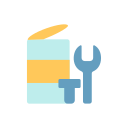Preventive Maintenance That Actually Saves Money
Oil, coolant, brake fluid, and transmission service schedules exist for a reason. Following the manufacturer’s intervals keeps seals healthy and contaminants low. Use reminders on your calendar and save receipts. Tell us your vehicle model, and we’ll help prioritize the most cost-effective maintenance sequence for your specific driving pattern.
Preventive Maintenance That Actually Saves Money
Neglected fluids destroy components slowly and expensively. Fresh coolant prevents electrolysis that eats radiators, and timely brake fluid changes reduce moisture that corrodes calipers. These services are cheaper than replacing hard parts. Drop a comment if you’ve seen dark fluid turn into a big repair, and share what you learned.
Preventive Maintenance That Actually Saves Money
Create a simple spreadsheet with mileage, date, part numbers, and torque specs. Group tasks: rotate tires during oil changes, inspect brakes at rotations, scan codes monthly. This rhythm reduces surprise failures and improves resale value. Subscribe to download our free, editable maintenance planner tailored to cost-effective automotive repair strategies.


